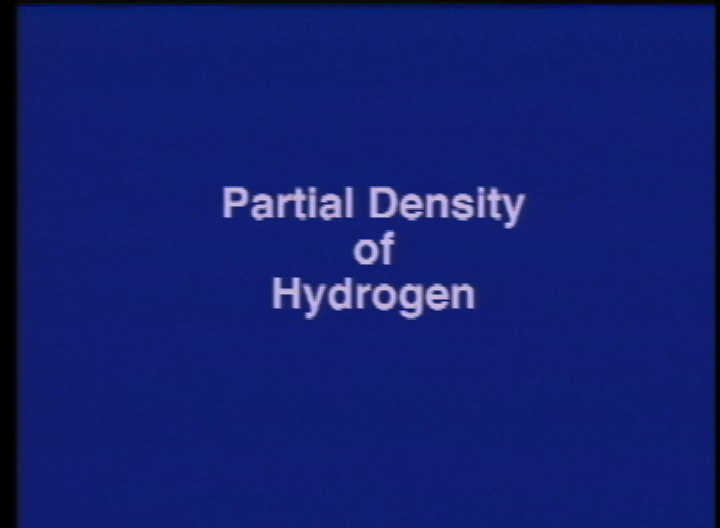Universe
ID: 41
The following calculation shows the development and evolution of Rayleigh-Taylor instabilities which develop behind the supernova blast wave on a time scale of a few hours. The initial model was chosen to provide a good representation for the progenitor star for Supernova 1987A. The calculation was performed using the Piecewise-Parabolic Method for hydrodynamics on a two-dimensional spherical grid with rotational symmetry about the vertical axis and equatorial symmetry about the horizontal axis.

Rayleigh-Taylor Instabilities in Supernovae Explosions: Partial Density of Hydrogen
The grid contained 800 zones in the radial direction and 400 zones in the angular diraction and was allowed to expand homologously with the explosion to maintain as high a resolution as possible in the unstable layer during the evolution. The following sequences show the evolution of the density distribution as well as the distribution of hydrogen, helium, and oxygen within the ejecta to illustrate the amount of mixing caused by the instability. Each sequence shows the evolution in two reference frames.
In the first frame, the size of the plot expands with time as the grid expands. For the second reference frame, the size of the plot is kept fixed with the time so that more detail can be seen in the unstable layer.

Visualization Credits
Bruce Fryxell (NASA/GSFC): Lead Animator
Pamela ONeil (NASA): Animator
Bruce Fryxell (The University of Arizona): Scientist
Ewald Muller (Max Planck): Scientist
Dave Arnett (The University of Arizona): Scientist
Pamela ONeil (NASA): Animator
Bruce Fryxell (The University of Arizona): Scientist
Ewald Muller (Max Planck): Scientist
Dave Arnett (The University of Arizona): Scientist
Please give credit for this item to:
NASA/Goddard Space Flight Center Scientific Visualization Studio
NASA/Goddard Space Flight Center Scientific Visualization Studio
Science Paper:
Fryxell, B. A., Muller, E., and Arnett, D., 1989, Hydrodynamics and Nuclear Burning (MPI Astrophys. Rep. 449; Garching: MPI Astrophys)
Short URL to share this page:
https://svs.gsfc.nasa.gov/41
This item is part of these series:
Supernovae Instabilities
Astrophysics Simulations
Keywords:
SVS >> Density
SVS >> Hydrogen
SVS >> Rayleigh-Taylor
DLESE >> Space science
SVS >> Astrophysics
SVS >> Supernova
NASA Science >> Universe
Fryxell, B. A., Muller, E., and Arnett, D., 1989, Hydrodynamics and Nuclear Burning (MPI Astrophys. Rep. 449; Garching: MPI Astrophys)
Short URL to share this page:
https://svs.gsfc.nasa.gov/41
This item is part of these series:
Supernovae Instabilities
Astrophysics Simulations
Keywords:
SVS >> Density
SVS >> Hydrogen
SVS >> Rayleigh-Taylor
DLESE >> Space science
SVS >> Astrophysics
SVS >> Supernova
NASA Science >> Universe











